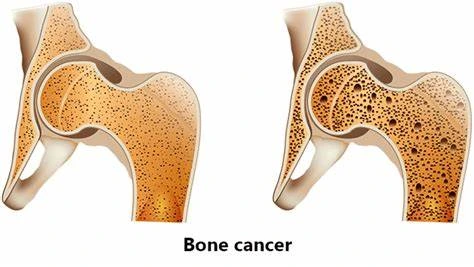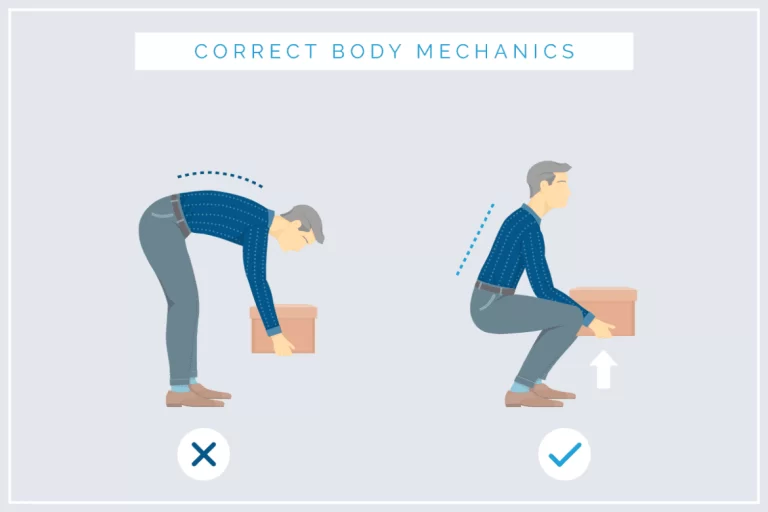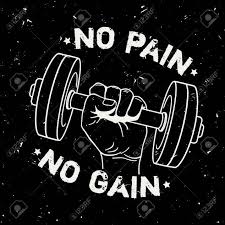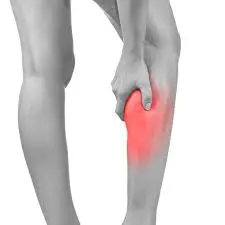How To Lose Weight?
Introduction
It’s recommended by several specialists to reduce weight gradually. It will probably remain off. In contrast to fat, you will lose muscle, bone, and water if you lose weight too quickly, according to the Academy of Nutrition and Dietetics.
The academy’s recommendation is to aim for weekly weight loss of 1-2 pounds and stay away from fad diets and items that seem too good to be true. It’s essential to build your weight loss strategy around long-term, sustainable adjustments.
You’ll need to work with a doctor to ensure that you stay healthy and obtain the nutrients you need if you want faster results.
Note a few things to help you lose weight
Create a strategy
The adage “calories in, calories out” is surely familiar to you; it simply means that you must burn off more calories than you consume in food and liquids.
However, as many individuals understand from personal experience, it’s not that easy.
When attempting to reduce weight, diet and exercise are both crucial. If your nutrition is out of balance, no amount of activity will make you lose weight. However, studies reveal that exercise, whether or not you’re aiming to reduce weight, has significant positive effects on your body and mind.
The process by which your body uses calories as fuel or metabolism is a key. Furthermore, cutting too many calories is unhealthy. Your metabolism slows down, which may cause you to consume insufficient amounts of certain nutrients.
You may accomplish this in a variety of ways without drastically reducing your caloric intake. You may:
- Reduce the amount of each component.
- Calculate how many calories you consume on a typical day and make some dietary changes.
- Check the food packages to see the number of calories that are in every food item.
- Increase your water intake to reduce your hunger.
- Whichever approach you choose, maintaining a healthy diet will need you to prioritise items that are excellent for you, such as fruits, vegetables, whole grains, and lean protein. However, there’s no one-size-fits-all approach to eating healthily. It’s a good idea to work with a dietician to create a plan that addresses your individual needs. It’s also critical to follow through on a healthy weight loss strategy after you’ve created it. The trend needs to continue in order to become healthy and stay that way over the long run, not simply for a week or a month.
Eat a broad range of colorful, nutrient-rich foods
Consume a healthy, diversified diet.
Nutritious food as well as snacks should form the fundamental component of a person’s diet. Making sure that each meal has 50% fruit and vegetables, 25% healthy grains, and 25% protein is an easy method to build a meal plan. Aim for a daily total fibre intake of 25–30 grams.
Eliminate trans fats from your diet and limit your intake of saturated fats, which are closely linked to the risk of coronary heart disease.
People may choose to consume unsaturated fats such as monounsaturated fatty acids (MUFA) and polyunsaturated fatty acids (PUFA) as an alternative.
The following foods are nutrient-dense and often contain a lot of nutrients:
- fresh fruits and vegetables
- fish
- legumes
- nuts
- seeds
- whole grains, such as brown rice and oatmeal
Foods to avoid eating include:
- foods with added oils, butter, and sugar
- fatty red or processed meats
- baked goods
- bagels
- white bread
- processed foods
There are situations when removing certain foods from the diet might leave a person deficient in vital vitamins and minerals. A nutritionist, dietician, or another healthcare professional may advise someone on a weight loss programme on how to make sure they are obtaining enough nutrients.
Maintain a food and weight log
Self-monitoring is essential to successful weight reduction. To track every single item they eat each day, people can use a specialized website, smartphone app, or paper journal. Maintaining a weekly weight record is another method they might use to monitor their progress.
A person is far more likely to maintain a weight reduction programme if they can recognize bodily changes and measure their progress in little increments.
Using a BMI calculator, people may also monitor their body mass index (BMI). To Calculate BMI Click Here
Exercise and physical activity on a regular basis
Weight loss can be aided by regular physical activity.
Regular exercise serves as essential for maintaining good physical and mental health. Increasing the frequency of physical exercise in a purposeful and regulated way is sometimes necessary for weight reduction to be successful.
It’s recommended to exercise for an hour each day at a moderate to high intensity, such as brisk walking. In the event that one hour a day is not achievable, one ought to try for at least 150 minutes per week.
People who are not active on a regular basis should gradually increase the amount and intensity of their exercise. Using this tactic is the greatest method to ensure that they incorporate regular exercise into their schedule.
Just as keeping a food journal can help people lose weight, recording physical exercise can also have psychological benefits. After logging food consumption and activity, a person can use one of the many free smartphone applications available to track their calorie balance.
If someone is new to exercising and finds the idea of a complete workout terrifying, they might start by practicing the following exercises to get more exercise:
- taking the stairs
- raking leaves
- walking a dog
- gardening
- dancing
- playing outdoor games
- parking farther away from a building entrance
It is improbable that a medical evaluation would be necessary for those at low risk of coronary heart disease before they start an exercise regimen.
But for certain people, especially those with diabetes, a prior medical evaluation could be recommended. Anybody who has concerns about the right amount of exercise should speak with a medical professional.
Take out the liquid calories
Drinking wine, tea, juice, soda with added sugar, or other beverages may add as many as hundreds of calories in a single day. These are referred to as “empty calories” as they add more energy content without improving nutrition.
Except in cases where smoothies are being used as a meal replacement, one should attempt to restrict their consumption to water, unsweetened tea, and coffee.
A squeeze of fresh orange or lemon may add flavor to the water.
Do not confuse thirst with hunger. A glass of water can frequently quench one’s appetite between meals that are scheduled.
Control portions and measure servings
Eating excessive amounts of any meal, including low-calorie vegetables, might result in weight gain.
Customers are therefore required to abstain from eating food directly out of the container or estimating portion sizes. Measuring cups and serving size recommendations are useful tools. Assumptions raise the possibility of overindulging in food and consuming more than is necessary.
When dining out, the size comparisons below might be helpful in keeping an eye on how much food is consumed:
- A half-cup can be as much as a tennis ball.
- 1 cup is a baseball
- 1 ounce (oz) of nuts is a loose handful
- 1 teaspoon is 1 playing die
- 1 tablespoon is a thumb tip
- 1 slice is a DVD
These measures are not exact, but they can help someone manage their food intake when the proper tools are unavailable.
Eat mindfully
A lot of individuals gain from mindful eating, which is paying close attention to what, when, how, where, and why they consume.
Getting more aware of one’s body leads directly to making healthier and better dietary options.
In addition to trying to eat more slowly and savour their meal, mindful eaters focus on the flavour. Giving a meal 20 minutes to complete allows the body to register all of the satiety indicators.
After a meal, it’s vital to concentrate on feeling content rather than full and to keep in mind that not all “all-natural” or low-fat foods are truly healthy options.
In addition, people may think about the following queries before selecting a meal:
- Is the “value” for the price in calories good?
- Will it make you feel full?
- Are the ingredients wholesome?
- How much fat and salt is in it, if it has a label?
Control of stimuli and signals
Numerous environmental and social objects may promote overindulgent eating. For instance, some people are more prone to overindulge in food when they watch TV. Some find it difficult to hand over a dish of candies to another person without nibbling themselves.
People can come up with strategies to modify their routine to reduce these triggers by being conscious of what could make them want to nibble on empty calories.
Increase your intake of protein
Whenever it pertains to weight loss, protein is the most vital food.
A diet rich in protein has the potential to enhance metabolism by as much as 80–100 calories daily, as the process of breaking down and metabolizing protein requires energy expenditure from your body.
Eating a diet rich in protein might also help you feel fuller and eat less. In fact, consuming a high-protein diet can reduce daily calorie intake by nearly 400, according to some research.
Eating eggs or another high-protein meal can make a big difference.
Give complete, one-ingredient meals first priority
Making whole foods with only one component the mainstay of your diet is one of the finest things you can do to improve your health.
By doing this, you eliminate processed meals, extra sugars, and added fats.
Because most whole meals are inherently highly full, following standard calorie guidelines is much easier.
Consuming entire meals also gives your body the many vital elements it requires for optimal operation.
Eating whole meals frequently has the natural side benefit of causing weight reduction.
Reduce your intake of processed foods.
Processed foods typically include large amounts of calories, extra fats, and added sugars.
Furthermore, manufactured meals are designed to encourage overeating. Compared to raw foods, they are considerably more prone to induce eating behaviors that are addictive.
Stock up on healthier snacks and meals.
The food you keep at home has a big impact on your weight and eating habits, according to studies.
Keeping nutrient-dense food on hand lowers the likelihood that you or other family members will consume less nutrient-dense food.
Additionally, there are many nutrient-dense, quickly-prepared snacks that you may grab on the run. These consist of hard-boiled eggs, almonds, carrots, yoghurt, and whole fruit.
Reduce the amount of additional sugar you consume.
Consuming large amounts of added sugar is associated with heart disease, type 2 diabetes, and cancer, among other major illnesses worldwide.
Americans consume around 15 teaspoons of added sugar each day on average. You could be eating a lot of sugar without even realizing it because this amount is typically concealed in a variety of processed goods.
Since sugar appears under many different names in ingredient lists, it can be quite challenging to determine the true amount of sugar in a product.
Reducing the amount of added sugar in your diet is a fantastic strategy to make improvements.
Drink a glass of water
It’s accurate to suggest that ingesting water can help you lose weight.
After an hour, drinking 0.5 litres (17 oz) of water can boost your calorie burn by 24–30%.
Another advantage of drinking water prior to meals is a reduction in calorie consumption, especially for middle-aged and older persons.
Water can help reduce weight a lot when it is used in place of other beverages that are high in calories and sugar.
Losing weight
It is possible for people to lose weight without following a strict diet plan like Atkins or Slimming World. Instead, the focus should be on promoting exercise and reducing calorie intake to achieve an energy imbalance.
Reducing the overall amount of calories consumed is what leads to weight reduction, not changing the ratios of protein, fat, and carbohydrates in the diet.
To start seeing health benefits, a 5- to 10-percent reduction in body weight throughout a 6-month period is an appropriate weight loss goal.
The majority of people may accomplish this aim by cutting back on their daily caloric intake to between 1,000 and 1,600 calories per day.
You won’t get adequate nutrients for the entire day if you consume less than 1,000 calories each day.
People prefer to consume less energy at a lower body weight, therefore after six months of dieting, the pace of weight loss normally decreases and body weight tends to stagnate. Regaining lost weight can be prevented by adhering to a weight management programme that includes regular exercise and healthy eating habits.
Prescription weight-loss medications may be helpful for those with a BMI of 30 or above who do not have any obesity-related health problems. Individuals with obesity-related disorders whose BMI is equal to or higher than 27 may also benefit from these.
Medication should only be used in conjunction with the abovementioned lifestyle changes, though. Surgical treatment is a possibility if weight loss efforts fail and a person’s BMI is 40 or above.
Summary
Sustaining weight reduction necessitates a dedication to a healthy lifestyle with no time off. While people shouldn’t feel bad about indulging in a special dinner out, celebrating a birthday, or having a festive holiday feast, they should also make an effort to stick to a diet that promotes nutritious eating and regular exercise.
Those who do can experience concentration problems. It’s simpler to gain back weight than to lose it.
When people make long-term lifestyle adjustments, they can lose weight and keep it off.
People who pay attention to what and how they eat, exercise regularly, and participate in daily physical activity will be effective in losing and maintaining their weight loss, regardless of any particular weight loss strategies.
FAQs
How can I slim my body at home?
Workout Routine
Begin with fifteen minutes of walking exercise.
For the following fifteen minutes, pick up the pace and begin running.
For a further fifteen minutes, run at a steady speed.
Restart your running for ten minutes at a slower speed.
Walk for five minutes while letting your body relax and walking more slowly.
What foods burn fat?
Fish and shellfish: 12 Foods That Boost Metabolism and Help Lose Weight. Potent Metabolism-Boosters: Fish are high in protein and omega-3 fatty acids, including salmon, tuna, sardines, and mackerel
Legumes (Also known as beans)
Chili Peppers
Lean Meats
Low-Fat Milk
Broccoli
Lentils
Oatmeal
How to burn calories?
The Physical Activity Guidelines for Americans suggest the following activities to increase calorie burn: aerobic exercise. Aim for at least 30 minutes a day of moderate physical activity as a general objective. You might need to exercise more if you want to reach certain fitness objectives, maintain weight loss, or lose weight.
What makes the body fat?
A complicated problem with several causes is obesity. It results from the body storing excess calories as fat. A large portion of the excess energy you consume—especially from foods heavy in fat and sugar—will be stored as fat in your body if you don’t burn it off via physical exercise.
What is a good diet plan?
Places a focus on whole grains, fruits, vegetables, and low-fat or fat-free milk and milk products. comprises a wide range of foods high in protein, including seafood, eggs, lean meats and poultry, legumes (beans and peas), soy products, nuts, and seeds. has minimal amounts of cholesterol, salt, saturated and trans fats, and added sugars.
References
- How to Lose Weight Safely. WebMD. https://www.webmd.com/diet/lose-weight-fast
- 29 Ways to Drop Weight Effectively (Backed by Science). Healthline. https://www.healthline.com/nutrition/30-ways-to-lose-weight-naturally
- A few tips for successful weight loss. https://www.medicalnewstoday.com/articles/303409








4 Comments